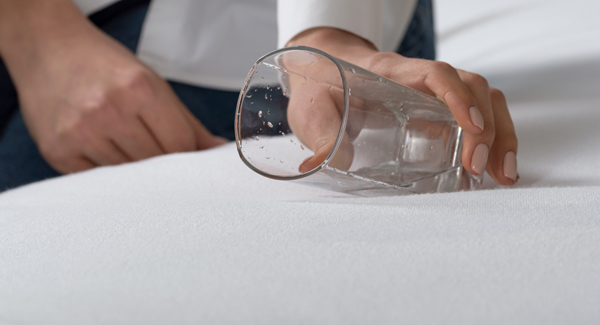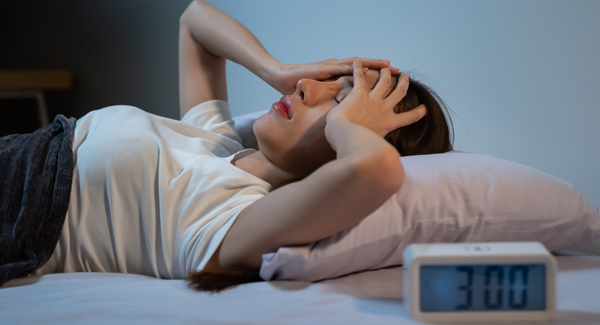Home » Bedding advice » Can You Wash A Mattress Protector?
Can you wash a mattress protector?
Article navigation
- Published:
- Written by: Tony Brown
- Topic: Bedding advice
A mattress protector is a removable cover that protects your mattress from stains, spillages, and accidents. It’s crucial to wash your protector occasionally to maintain its effectiveness. There are various styles of mattress protectors, all of which are easy and convenient to wash.
Why you should wash your mattress protector
Every night, your bed absorbs moisture, dead skin cells, bodily oils, and food and drink residue, creating the perfect breeding ground for bacteria and dust mites to thrive. Regularly washing your bedding, including mattress protectors, is essential to maintain a clean and comfortable sleep environment.
Dead skin cells
As you sleep, your body sheds dead skin cells, which can settle on your bedding. Regularly cleaning your mattress protector removes these dead skin cells.
Bodily oils and sweat
Throughout the night, your body releases oils and sweat, which can transfer onto your mattress protector. Sweating can contribute to a build-up of bacteria, potentially causing skin irritations, especially for those with sensitive skin. Moreover, hot and humid conditions can lead to increased night time sweating, necessitating more frequent washing of your bedding.
Pet dander
While sleeping with pets can be comforting, their dander can accumulate on the mattress protector. Regularly washing your protectors helps to remove pet hairs, drool, and allergens, ensuring a more pleasant and allergy-friendly sleep environment.
Food particles
Accidental spills or crumbs from eating or drinking in bed can make your bedding dirty and attract pests. The best course of action is to avoid eating or drinking in bed. However, if you enjoy a bedtime snack, clean your bedding regularly to avoid unwanted guests.
Allergens
Regularly washing your mattress protector is particularly important if you have allergies. Doing so helps minimise exposure to allergens during sleep, reducing the likelihood of allergic reactions.
Illness
After being ill, it’s important to wash your bedding more frequently. Illness can contaminate your bedding with germs and bodily fluids, increasing the risk of reinfection or spreading the illness. Washing the bedding helps maintain hygiene, removes lingering germs, and eliminates odours caused by symptoms like sweating. It also reduces allergens that can worsen allergies. You create a cleaner and healthier sleep environment by washing your bedding after being ill.
How often should you wash a mattress protector?
It is generally recommended to wash your mattress protector every one to two months. However, there may be circumstances that require more frequent washing. For example, if you have allergies, experience excessive sweating, or spillages that require more immediate attention.
However, some people prefer to wash their mattress protectors with the rest of their bedding as part of their weekly cleaning routine.
Cleaning a mattress protector promptly is crucial after a liquid accident, such as bedwetting or spilling a drink. Liquids like urine or spilt beverages can lead to unpleasant odours, discolouration, and even mould or mildew growth. Washing the protector immediately after a liquid accident prevents liquids from penetrating the mattress, avoiding stains, soiling, or damage. It also keeps the protector clean, hygienic and in good condition.
Frequent cleaning may be unnecessary if the mattress protector is not used regularly. For example, if it is used on a spare bed. However, it still helps to clean the protector occasionally.
When guests stay, washing the mattress protector before and after their visit is advisable, as this helps to maintain a clean and hygienic sleep environment. It also ensures the protector remains fresh and ready for use when required.
It’s also a good idea to wash a mattress protector before using it for the first time. This will help soften the protector, making it more flexible and eliminating packaging odours.
Maintaining two mattress protectors is a practical approach, ensuring you have a spare available while one is being washed.
How do you clean a mattress protector?
Most mattress protectors are suitable for machine washing. It is recommended to wash your protector at least once a month, depending on its condition and usage.
Here are some general guidelines for cleaning different types of mattress protectors. However, be mindful that specific care instructions may vary depending on the type and brand of the mattress protector. Before cleaning, always refer to the manufacturer’s care instructions for the best cleaning results.
If your mattress protector is machine washable, follow the steps below:
- Remove the protector from the mattress.
- Pre-treat any stains if necessary.
- Place the protector in the washing machine. Some manufacturers may recommend washing with other linens to avoid damaging the material.
- Wash the protector on a gentle cycle with cool or warm water and mild detergent.
- Avoid using bleach or harsh chemicals as they may damage the material.
- Follow the recommended drying method (tumble dry on low or line dry).
- Ensure the protector is completely dry before placing it back on the mattress.
If your mattress protector is hand-wash only, follow the steps below:
- Take off the mattress protector from the mattress.
- Apply a small amount of mild detergent directly on stains for spot cleaning.
- Carefully hand-wash the top of the cover with warm or cold water. Avoid hot water to prevent shrinking.
- Allow the cover to air-dry thoroughly before placing it back on the mattress.
How often should you replace a mattress protector?
A well-maintained mattress protector can typically last between two and five years. However, higher-quality protectors may last longer. It’s important to check your mattress protector regularly for signs of wear and tear and that it provides effective protection against stains and spillages. This will help you determine when it needs to be replaced.
Additionally, following the manufacturer’s care instructions can help extend the life of the mattress protector.
Final thoughts
A mattress protector safeguards your bed against spillages and seepages. Taking good care of your mattress cover ensures a clean and comfortable sleeping surface while effectively protecting your mattress.
Share this article

About the author
Tony Brown is the founder and creator of The Bed Consultant. His career in the bed industry began in 2002. After graduating from university with a degree in Business Administration, Tony joined one of the largest independent furniture retailers in the UK as a bed consultant. Tony has helped thousands of customers find the perfect mattress.


